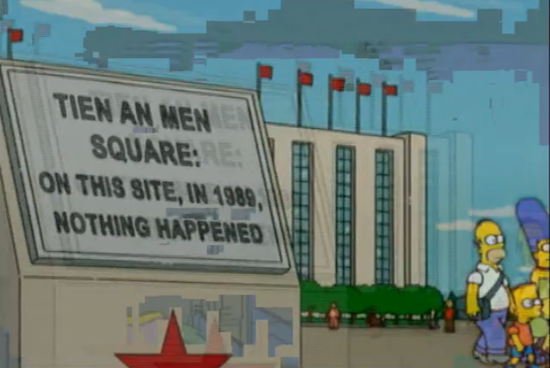The signs claimed “On this site in 1897 nothing happened.” It felt mildly amusing, maybe even a tiny bit clever the first time — the first time! — I saw one of their ilk several years ago. They mimicked the look-and-feel of genuine historical markers with faux cast iron, bold font, adorned with a couple of official-looking stars, and appearing on random walls, rocks, pillars, and homes in places where, quite accurately, nothing much special ever happened. I’m sure many people in the 12MC audience noticed these conversation pieces scattered around during their travels.

The Memphis Convention & Visitors Bureau spotted this one. The tag geolocated to a parking lot near the intersection of S. Front Street and Beale Street. I poked around in Street View for awhile, noticed a promising brick wall, and couldn’t find the actual sign in the wild, though.
“Nothing” Becomes Too Much
The trend had likely run its course already by the time “nothing happened” signs appeared on Amazon for $29.99. Other sources priced them even lower.
Imitators delivered additional evidence of oversaturation. Variations from my very unscientific survey of photo sites included September 5, 1782 (second most common), 1832 (third most common), April 17, 1897 (adding even greater precision to 1897), March 13, 1893, June 12, 1761, April 1, 1780, and on-and-on, including one specifying that George Washington never slept there. They all held one thing in common; that on that date and in that spot, nothing happened. There’s even an entire group on Flickr devoted to nothing happening.
Nothing in the United Kingdom

Interestingly, while 1897 seemed to be a preeminent date for historical non-occurrences in the United States, September 5, 1782 seemed to dominate in the United Kingdom. I’m sure an enterprising scholar could frame an entire doctoral dissertation around the definition of historic age in the U.S. versus the U.K. It’s about a hundred years farther back in the Old Country, apparently.
The example, noted above, traced to Great Yarmouth, Norfolk, England. One person commenting on its page, observed:
“I think whoever made this sign made a typo and used an 8 instead of a 5. It would be factually correct and even more amusing if it read Sept 5, 1752 because absolutely nothing happened on that day due to the date changes of the British Calendar Act of 1751.”
That seemed so cool I had to look it up. Sure enough, the Parliament of Great Britain passed the Calendar (New Style) Act 1750 and amended it with the Calendar Act 1751. Thus, September 5, 1752 didn’t exist in Yarmouth because the calendar skipped from Wednesday September 2 straight over to Thursday September 14, 1752 during a transition from Julian dates to Gregorian.
Origin?
Humorous signs like these have been around for at least a couple of decades. Multiple Internet sources said they’ve been around “since at least the 1980’s.” The date seemed plausible. However, as is typical, they all quoted from each other in circular fashion. None of them reference a reliable primary source. The earliest definite reference I found traced to a November 1990 Chicago Tribune article, Unhistory – A suspiciously long prepositional phrase. This highlighted a sign affixed to a rock at the Evanston, Illinois campus of Northwestern University. It’s still there, and it’s known colloquially as The Nothing Happened Rock. I can’t believe I found the actual rock on Street View (map). That’s nuts.
Parody

Nothing Happened signs have become a part of the collective consciousness. A parody sign debuted on the Goo Goo Gai Pan episode of The Simpsons, first aired on March 13, 2005. “On this site, in 1989, nothing happened,” appeared as the family walked through Tiananmen Square. This served as an obvious reference to the momentous events of that year and subsequent efforts to wipe it from Chinese memory.
The joke has grown a little threadbare over the years. Nonetheless, people are still discovering Nothing Happened for the very first time, and expressing their amusement. I suspect that they’ll be around for awhile.

Leave a Reply